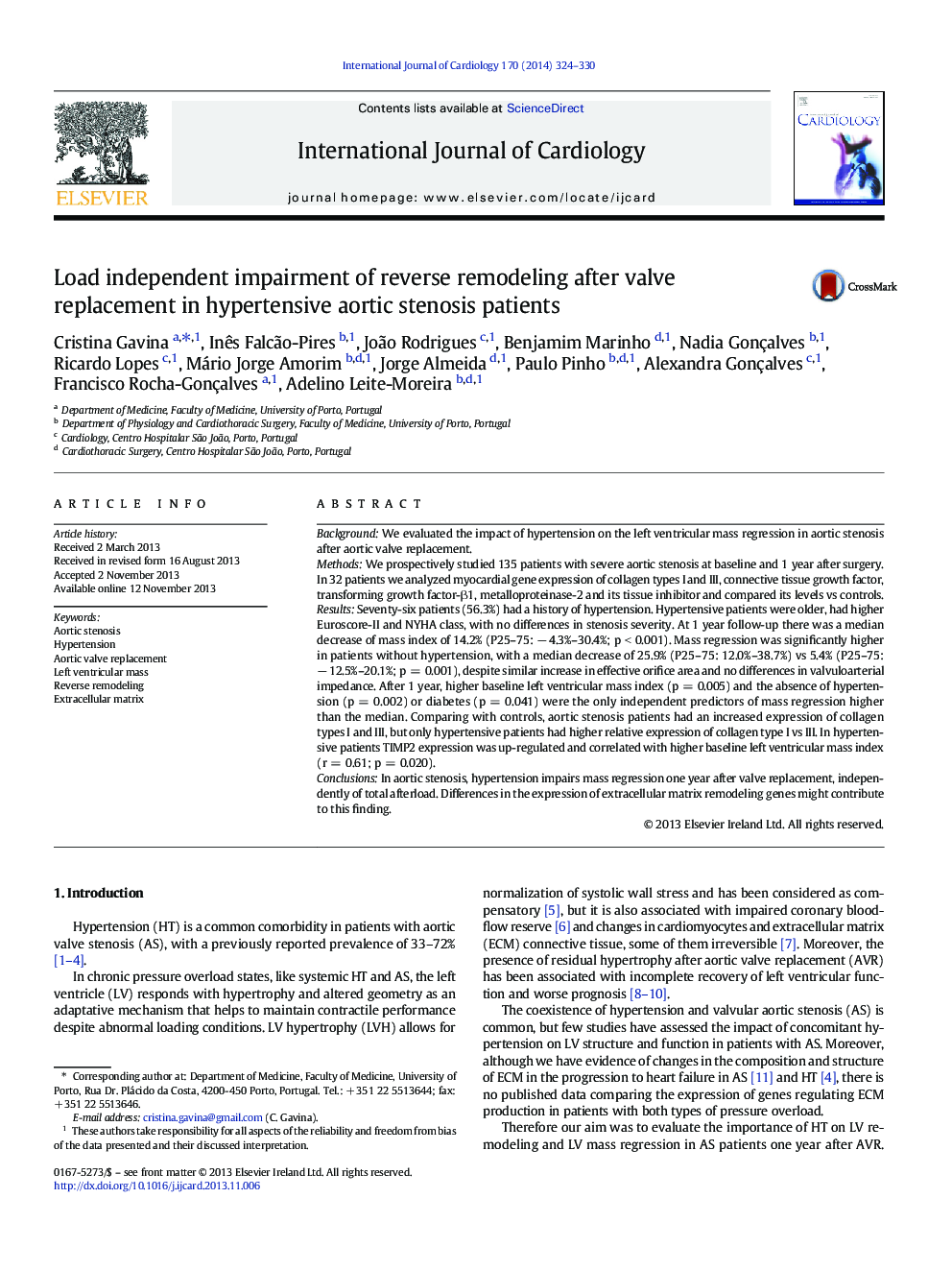| Article ID | Journal | Published Year | Pages | File Type |
|---|---|---|---|---|
| 5973039 | International Journal of Cardiology | 2014 | 7 Pages |
BackgroundWe evaluated the impact of hypertension on the left ventricular mass regression in aortic stenosis after aortic valve replacement.MethodsWe prospectively studied 135 patients with severe aortic stenosis at baseline and 1 year after surgery. In 32 patients we analyzed myocardial gene expression of collagen types I and III, connective tissue growth factor, transforming growth factor-β1, metalloproteinase-2 and its tissue inhibitor and compared its levels vs controls.ResultsSeventy-six patients (56.3%) had a history of hypertension. Hypertensive patients were older, had higher Euroscore-II and NYHA class, with no differences in stenosis severity. At 1 year follow-up there was a median decrease of mass index of 14.2% (P25-75: â 4.3%-30.4%; p < 0.001). Mass regression was significantly higher in patients without hypertension, with a median decrease of 25.9% (P25-75: 12.0%-38.7%) vs 5.4% (P25-75: â 12.5%-20.1%; p = 0.001), despite similar increase in effective orifice area and no differences in valvuloarterial impedance. After 1 year, higher baseline left ventricular mass index (p = 0.005) and the absence of hypertension (p = 0.002) or diabetes (p = 0.041) were the only independent predictors of mass regression higher than the median. Comparing with controls, aortic stenosis patients had an increased expression of collagen types I and III, but only hypertensive patients had higher relative expression of collagen type I vs III. In hypertensive patients TIMP2 expression was up-regulated and correlated with higher baseline left ventricular mass index (r = 0.61; p = 0.020).ConclusionsIn aortic stenosis, hypertension impairs mass regression one year after valve replacement, independently of total afterload. Differences in the expression of extracellular matrix remodeling genes might contribute to this finding.
